Fluffy and long-haired cats often steal the spotlight, but there’s a captivating group of felines that offers a unique and minimalist aesthetic: hairless cats. These attention-grabbing companions range from having a soft, velvety down to being completely devoid of fur. While you might think their lack of hair equates to low-maintenance care, these special breeds require dedicated grooming and protection from environmental elements like sun and cold. However, enthusiasts of these unique beauties will tell you that the extra care is absolutely worth it. Let’s explore some of the most intriguing hairless cat breeds.
Exploring Different Types of Hairless Cats
1. Sphynx: The Original Hairless Wonder
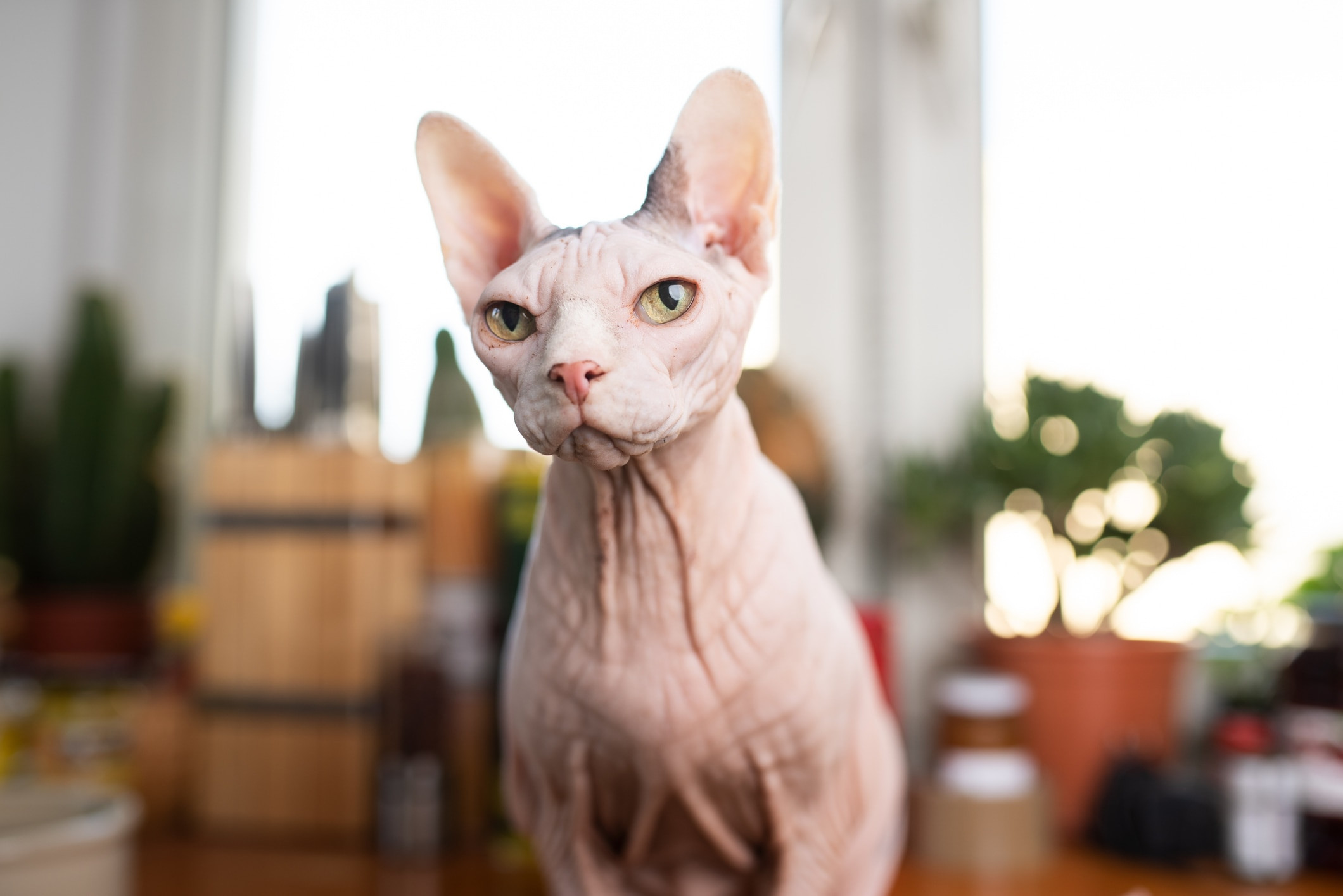 A pink Sphynx cat gazes downwards at the camera in a cozy living room setting
A pink Sphynx cat gazes downwards at the camera in a cozy living room setting
Photo credit: Nils Jacobi/iStock / Getty Images Plus via Getty Images
Often perceived as entirely naked, the Sphynx cat is actually covered in a fine layer of downy fur. According to April Arguin, a Sphynx breeder and founder of LiLNudists Cattery, the Sphynx’s skin has a suede-like texture, making them wonderfully warm to cuddle, especially on cooler days. Sphynx cats can have whiskers and eyebrows, or lack them entirely, but they are all characterized by their distinctive wrinkles and elongated toes. Known for their vocal nature, Sphynx cats are not shy about expressing themselves!
2. Bambino: The Short-Legged Hairless Charmer
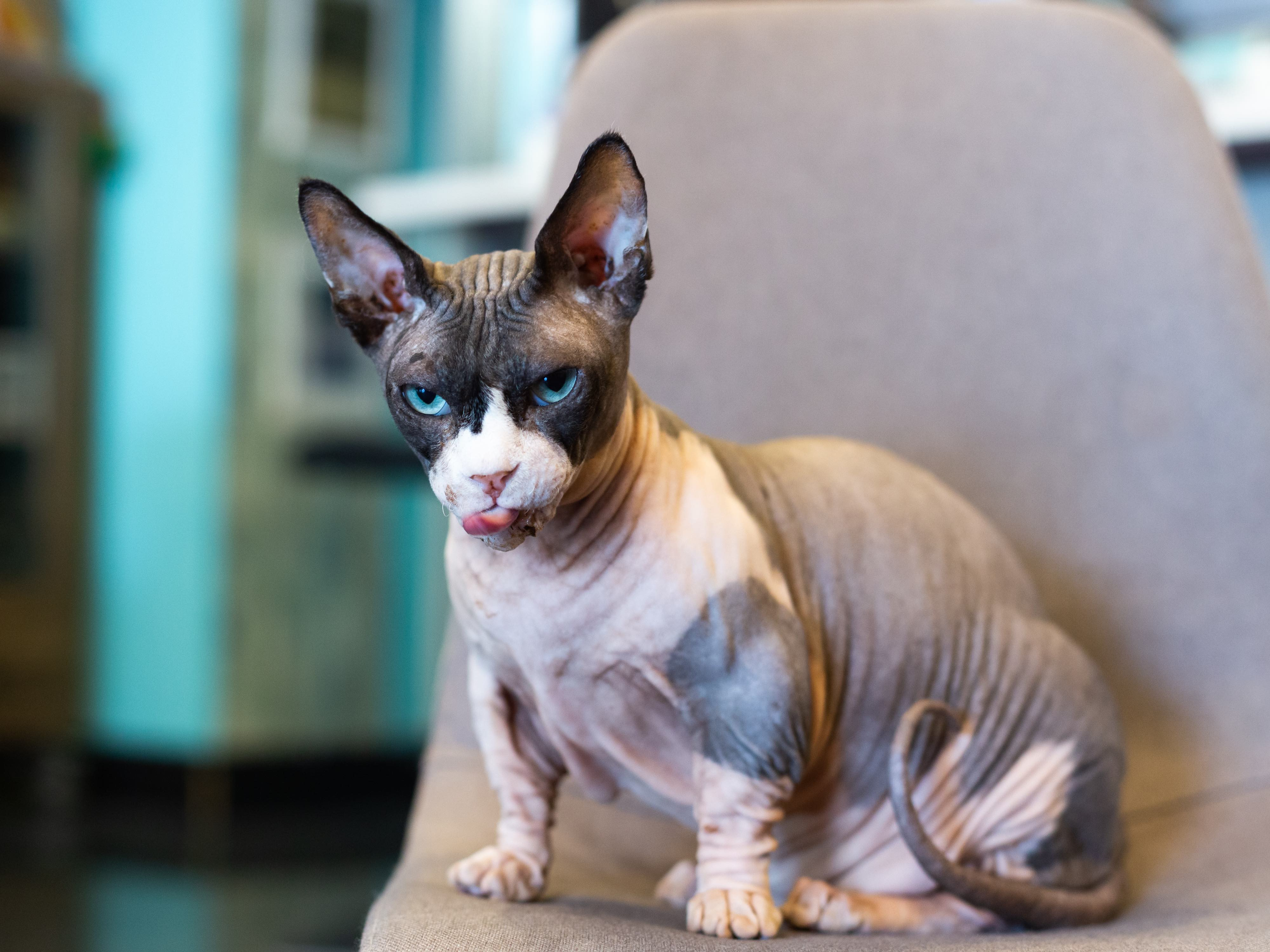 A pink and grey Bambino cat playfully licks its lips
A pink and grey Bambino cat playfully licks its lips
Photo credit: Adobe Stock/Anne Richard
The Bambino is a more recent addition to the hairless cat family, emerging in 2005. Currently considered an “experimental breed” by the Cat Fanciers Association, the Bambino is a hybrid of the hairless Sphynx and the short-legged Munchkin cat. April Arguin emphasizes their need for human interaction and attention, suggesting that a Bambino thrives best with a dedicated owner who can provide plenty of daily playtime and engagement. Given their playful and affectionate nature, some owners even opt for a pair to keep each other company. Bambinos come with a significant price tag, typically ranging from $2,000 to $2,800 due to their rarity and unique lineage. It’s also important to note that their Munchkin heritage can predispose them to joint problems related to their short legs.
3. Peterbald: The Elegant and Energetic Hairless Cat
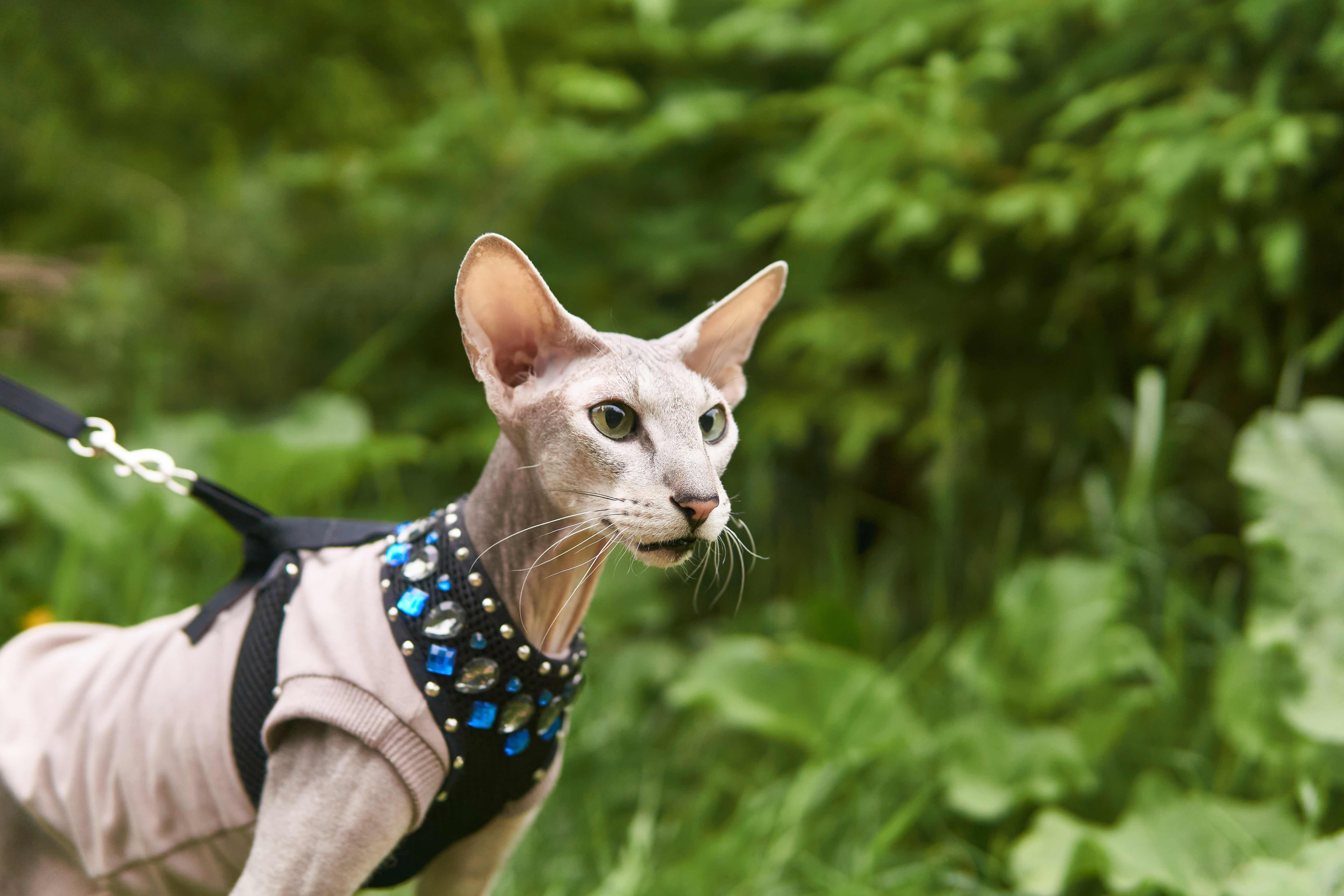 A grey Peterbald cat wearing a stylish sweater on a leash outdoors
A grey Peterbald cat wearing a stylish sweater on a leash outdoors
Photo credit: Adobe Stock/Evgeny
Easily recognizable by their large, pointed ears that appear disproportionately large for their wedge-shaped heads, Peterbald cats are a striking hairless breed. While less common outside of Russia, they are known for their friendly and energetic personalities. Peterbalds are often described as playful and dog-like, enjoying games of fetch and frequently following their owners around the house. Interestingly, not all Peterbalds are truly hairless. Their coat can range from completely bare to a light fuzz, curly, or even wiry fur of varying lengths. Some Peterbalds can even develop a short or long coat similar to typical domestic cats.
4. Donskoy: A Hairless Cat with Coat Variations
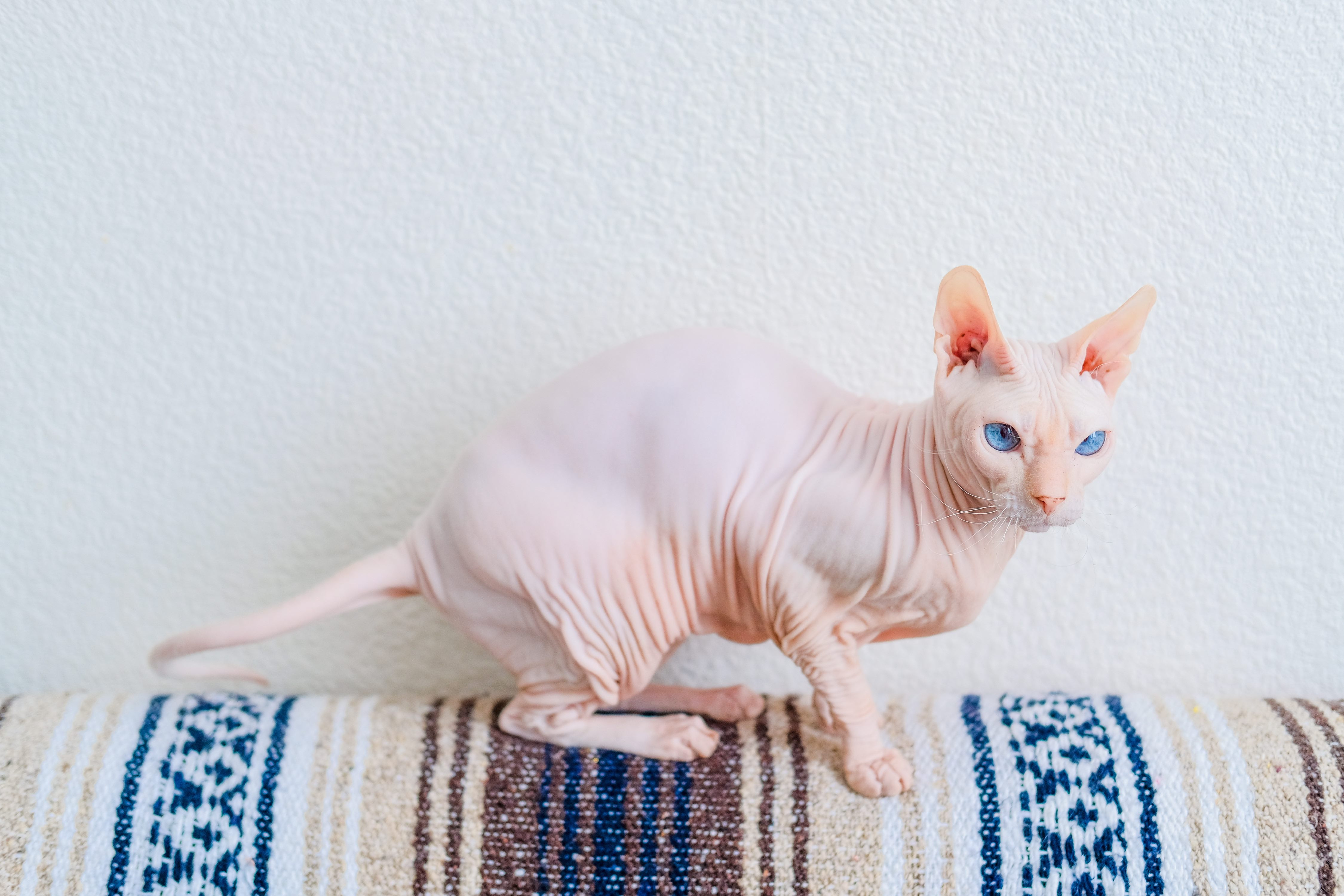 A pink Donskoy hairless cat with striking blue eyes perched gracefully on a couch
A pink Donskoy hairless cat with striking blue eyes perched gracefully on a couch
Photo credit: Adobe Stock/yolya_ilyasova
Donskoy cats, also sometimes referred to as Don Sphynx, exhibit a fascinating range of coat types, categorized into four main varieties:
- Rubber bald: These Donskoys are born completely hairless and remain so throughout their lives.
- Flocked: Born with a soft, downy coat resembling peach fuzz, some flocked Donskoys may lose their fuzz and become bald as they mature.
- Velour: Velour Donskoys are born with a bald patch specifically on the top of their head.
- Brush: Brush Donskoys have sparse, wiry hair across their body with noticeable bald patches.
Known for their sweet and intelligent nature, the Donskoy makes a wonderful family pet, readily integrating into households with children and other animals.
5. Lykoi: The Unique “Werewolf Cat”
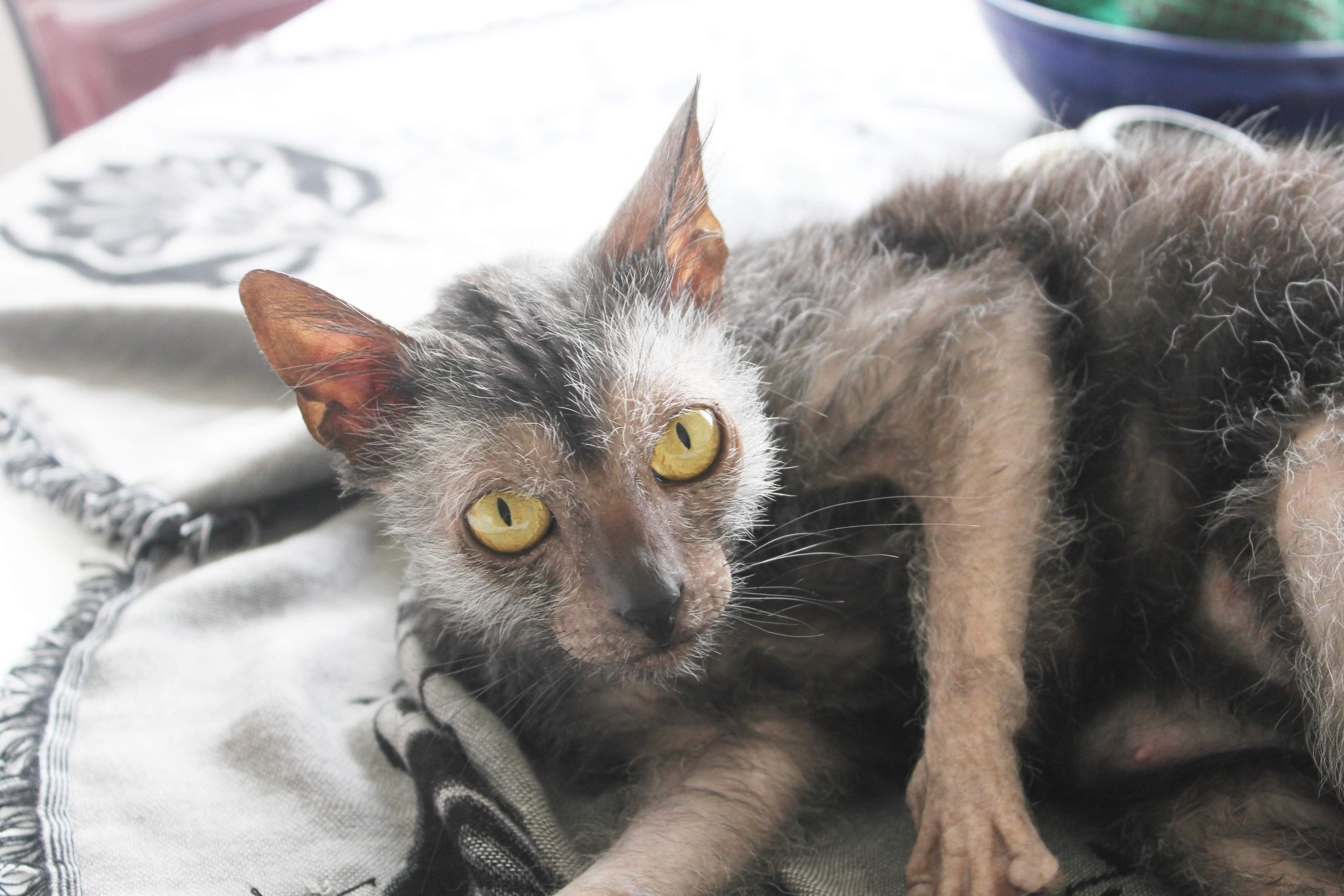 A grey Lykoi cat lying on its side, looking directly at the camera with piercing eyes
A grey Lykoi cat lying on its side, looking directly at the camera with piercing eyes
Photo credit: Angela Emanuelsson/iStock / Getty Images Plus via Getty Images
The Lykoi, nicknamed the “werewolf cat,” is distinguished by its sparse coat that periodically molts, a process known as “wolfing out.” Despite their somewhat wild appearance, Lykois possess incredibly soft fur when they do have a coat, making them delightful cuddle companions. Owning such a unique breed comes with a higher price tag, with Lykoi kittens typically starting around $1,000. Their unique coat and playful personality make them a truly special breed.
6. Ukrainian Levkoy: The Hairless Cat with Folded Ears
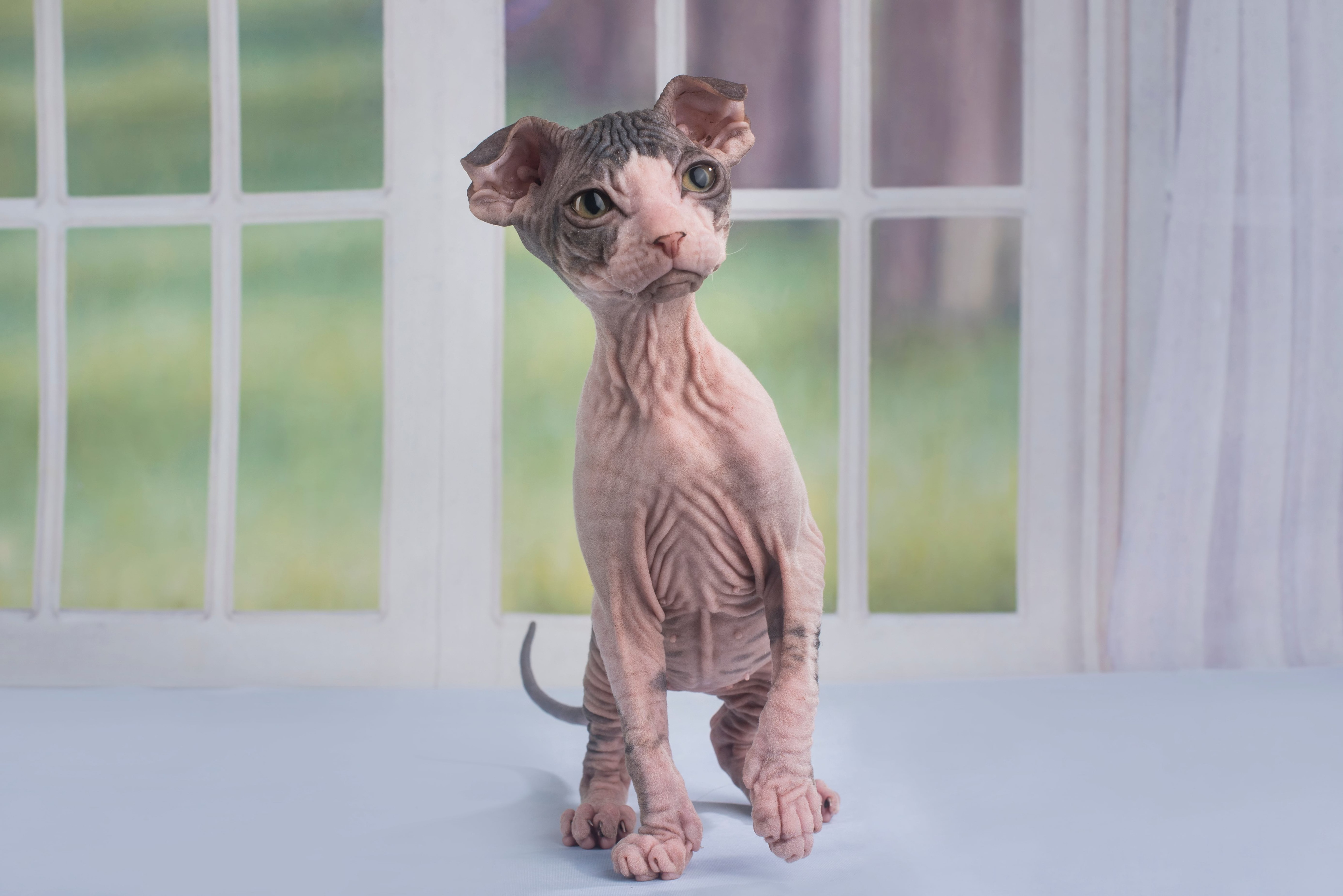 A hairless Ukrainian Levkoy kitten stands elegantly against a bright window
A hairless Ukrainian Levkoy kitten stands elegantly against a bright window
Photo credit: Adobe Stock/Светлана Валуйская
If the folded ears of the Ukrainian Levkoy seem familiar, it’s because this breed shares a close genetic link with the Scottish Fold. Established in 2004, the Ukrainian Levkoy is a relatively new breed, and their long-term health is still being studied. However, given the Scottish Fold’s predisposition to joint and cartilage issues, similar health risks are suspected for Ukrainian Levkoys. While the folded ear trait is highly prized and can command a higher price (up to $2,000 per kitten), not all Ukrainian Levkoys inherit this gene. Regardless of ear type, they are generally known for their calm and stoic temperament, often enjoying quiet companionship with their human families.
Special Care Considerations for Hairless Cats
Bringing a hairless cat into your home requires understanding their unique needs. Their lack of fur makes them more vulnerable to sunburn and less able to regulate their body temperature compared to their furry counterparts. Protecting them from the elements is crucial. This includes using pet-safe sunscreen, applying UV filters to windows, providing cooling mats during hot weather, and dressing them in cozy sweaters during colder months.
Hairless cats also tend to have oilier skin. While frequent bathing might seem necessary, it can actually dry out their skin. Consult your veterinarian to establish an appropriate skincare routine, which might include regular gentle wipe-downs or occasional baths using specialized shampoos designed to replenish their skin’s natural oils. Additionally, their ears and nails require more frequent cleaning due to increased wax and oil buildup, according to breeder April Arguin.
Hairless Cat FAQs
Are hairless cats hypoallergenic for allergy sufferers?
While no cat is truly hypoallergenic, as the allergens are found in saliva, urine, and dander regardless of fur length, hairless cats are often considered among the best cat breeds for people with allergies. This is due to the reduced amount of dander released into the environment. However, it’s always recommended to consult with your doctor about allergy management strategies before bringing any cat into your home.
What is the typical cost of a hairless cat?
Due to their relative rarity, hairless kittens typically range in price from $1,000 to $2,000. Finding a hairless cat in a general animal shelter is uncommon. However, you may find specialized breed rescues in your area that occasionally have hairless cats available for adoption.
Are hairless cats known for being friendly?
Like all cats, the friendliness of a hairless cat is largely influenced by their socialization experiences as kittens. Early and positive exposure to people, other pets, and new environments is key to developing a well-adjusted and friendly companion. With proper socialization and positive reinforcement, hairless cats can be just as affectionate and loving as any other cat breed.
WRITTEN BASED ON ARTICLE BY
Janelle Leeson
Freelance Writer

